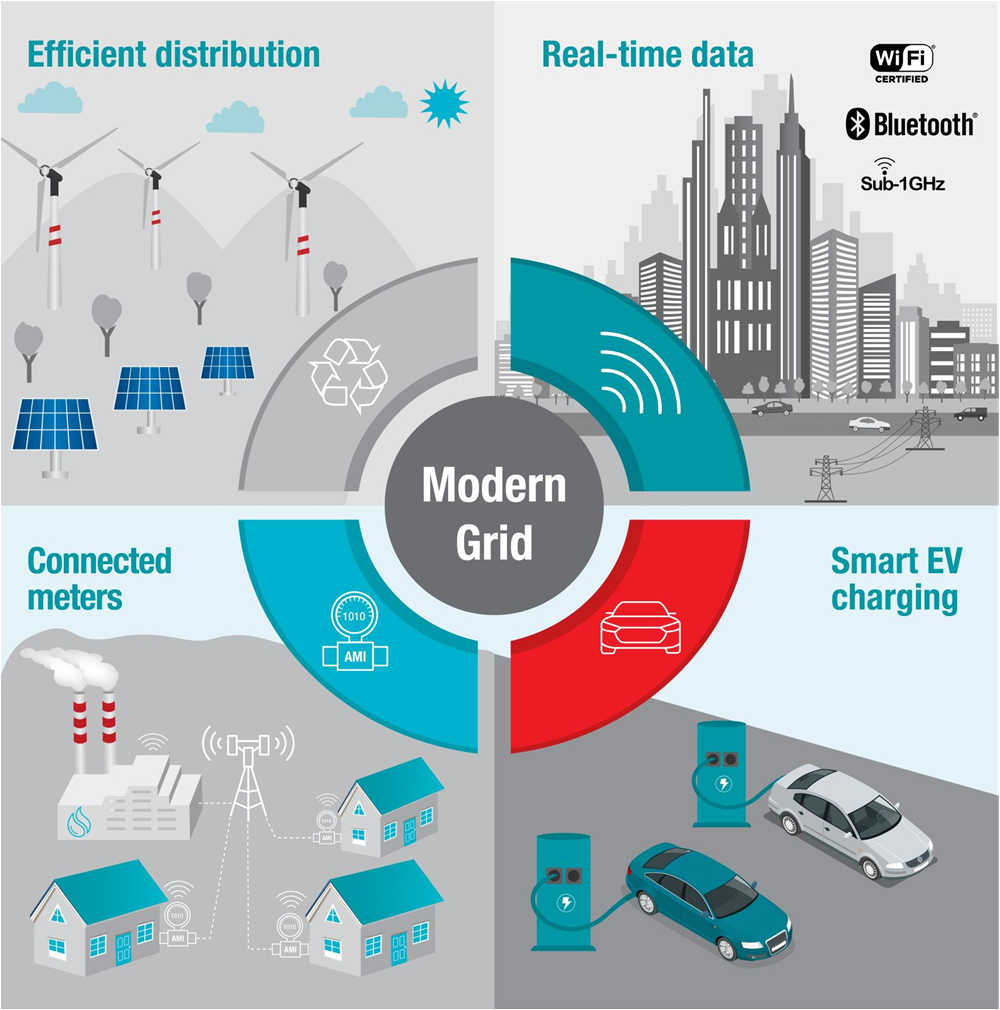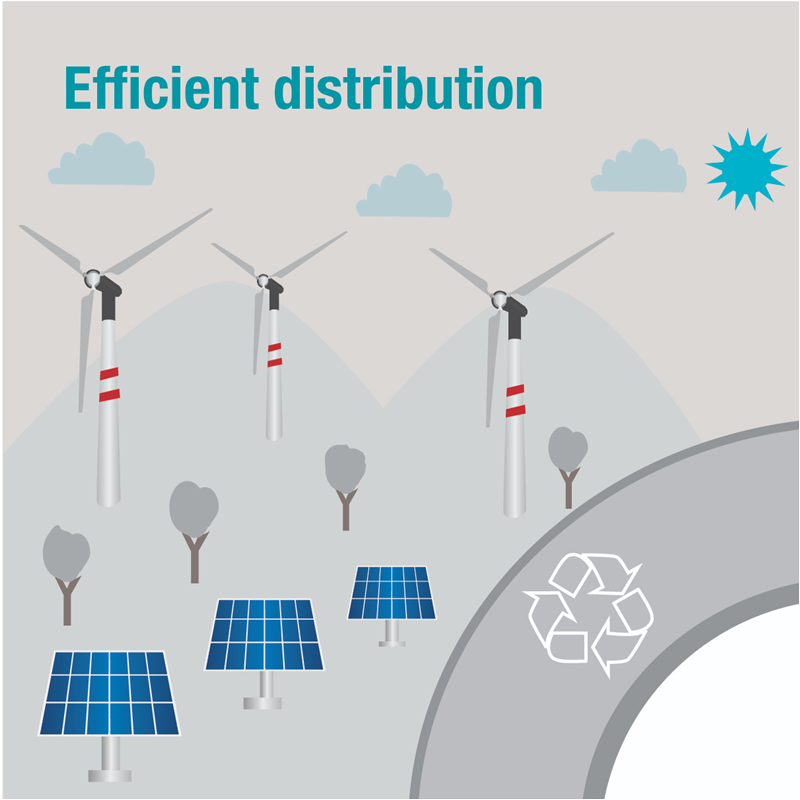-
Modernizing the Grid to Make it More Connected, Reliable and Secure
Modernizing the Grid to Make it More Connected, Reliable and Secure
At a glance
This white paper summarizes developments in four key elements of grid modernization:
More regions are seeing the decentralization of renewable energy sources as
a means to strengthen their infrastructure. | |
Electric vehicles (EVs) play a significant part of the smart grid, from
forecasting charging needs to conserving power or adding excess energy back
to the grid. | |
Wired and wireless technologies enable the transfer of real-time data for
the grid, as well as automation, distribution and control. | |
The connected grid is about more than electricity; gas and water utilities
can adopt a variety of simple, low-cost solutions for connectivity, sensing
and control. |
Authors

The distribution network that connects generating plants to homes, buildings, factories, vehicles, cities and other sectors continues to require upgrades for reliability and resiliency. By employing advanced, connected sensors in generation, transmission and distribution, grid operators can monitor health and safety needs, optimize old and costly assets, detect faults and increases in demand, and restore power more quickly during an outage.
Data from grid assets gives operators greater insight into infrastructure performance, including different generation mixes, environmental conditions or security risks. Smart grid sensors enable the remote monitoring of equipment such as transformers and power lines, and facilitate demand-side resource management. Smart grid sensors can also monitor weather events and power-line temperatures in order to calculate a line’s carrying capacity. A variety of wired and wireless protocols such as industrial Ethernet, RS-485, Controller Area Network and Wireless Smart Utility Network (Wi-SUN) can communicate the information gathered by the sensors.
On the load side, smart meters help consumers ease the migration toward more renewable energy solutions in their homes as well as for charging their EVs. Smart meters can also help consumers make better choices based on energy needs and sources. And in other cases, such meters can help monitor for bidirectional charging, such as when homes or cars return energy to the grid.
What was once a network of electromechanical systems with minimal feedback and passive loads has become highly automated and driven by intelligent devices and modernization strategies. The result is a more interconnected power delivery network – from generation to transmission and from distribution to end use – integrating distributed energy resources and ensuring greater grid reliability and resiliency.
Distributed energy resources as an integral part of the grid

Traditionally, the power grid has been a “one-way street,” with power flowing from utility-owned centralized generation, transmission and distribution lines toward consumers. As solar and wind energy start to make up a greater share of the electric grid, dynamic management will become more prevalent. Utilities have come to view the electric grid as more of an interconnected web, with a small but growing number of consumers generating electricity with small-scale, distributed systems. In other words, homes and vehicles may alternate between acting as energy consumption and generation units.
Solar and wind energy have zero carbon emissions, and unlike fossil fuels, are not affected by price volatility. More and more regions (especially those with abundant sunlight or wind and a high cost of electricity) have reached grid parity – the point at which renewable energy is equal to or cheaper than the cost of fossil fuel.
Solar microinverters are an integral segment of the solar power industry. Texas Instruments (TI) has a comprehensive selection of isolated and non-isolated gate drivers, digital isolators, Ethernet and RS-485 transceivers, current-sensing and voltage monitoring devices, and microcontrollers (MCUs) that can handle digital control loops targeted at all sizes of inverters, both grid-tied and off-grid, to maximize system efficiency and extend product life spans. All of these products must operate in the harshest environments, especially in extreme temperatures.